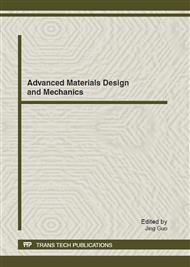p.442
p.447
p.451
p.455
p.461
p.466
p.472
p.477
p.482
Theoretical and Experimental Study on Stiffness Characteristics of a Wire Race Ball Bearing
Abstract:
A new mathematical model on the stiffness matrix of the bearing was established by using the non-conforming Hertz contact theory. In this model, the case of compound load and the coupling effects was considered. The numerical arithmetic to estimate the displacements under the compound loads is discussed. As a sample, a wire race ball bearing used in a certain type of three-axis aircraft simulating rotary table was provided. The curves of axial stiffness and radial stiffness were obtained in MATLAB. The experimental system for measuring the stiffness was built. The experimental results verify the validity of the theoretical model.
Info:
Periodical:
Pages:
461-465
Citation:
Online since:
September 2012
Authors:
Price:
Сopyright:
© 2012 Trans Tech Publications Ltd. All Rights Reserved
Share:
Citation:


